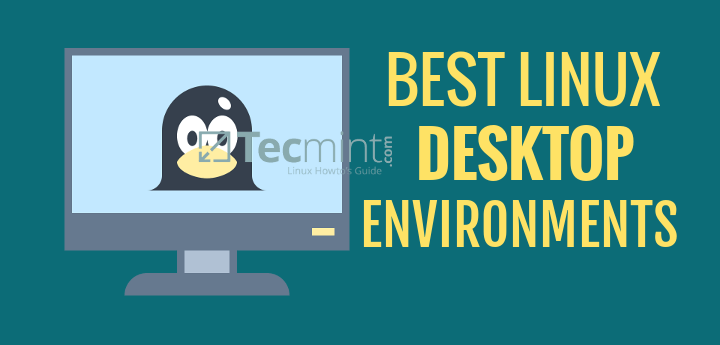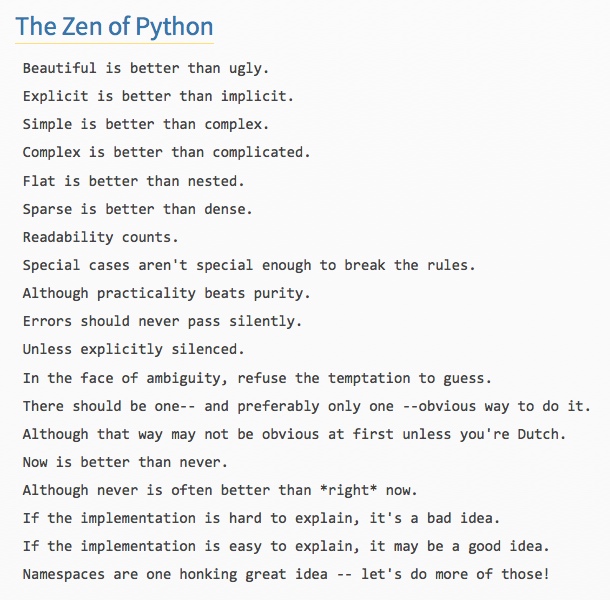Mysql For Python Mac
Oct 31, 2008 This is because the coders behind MySQL-python have failed to fix a very simple bug in types.h (1808476 - '#define of uint breaks compiling on Mac OS X 10.5'). However, you can easily fix it yourself: Look for a reference to types.h in the terminal.
MySQL GUI tools are open source relational data management and storage system. This system is popular for improving the overall functionality and quality of web applications. MySQL GUI tool is known for integrating SQL development, database design, administration, creation, and maintenance into single and useful development environment for database systems.
Related:

- Feb 21, 2010 Running on mac osx 10.7, python 2.7, 64 bit version, MySQL 64 bit version as well. I followed along step by step and seemed to good progress but caught a snag where instructed to run: $ ARCHFLAGS=”-arch x8664″ python setup.py build.
- Currently, the only egg files available for MySQL for Python version 1.2.3c1 are for Linux running either Python 2.5 or 2.6. Mac users should use a tarball (tar.gz) file as discussed in the next section. To get an egg file for Windows, click on the MySQL-python directory and select the 1.2.2 version. This is the same directory used for the.
- May 11, 2020 Download the mysql-connector-python-8.0.11-macos10.13.dmg file. It is an architecture Independent DMG file.Install the downloaded MySQL Connector Python by opening it and double-clicking the resulting.pkg file. Verifying MySQL Connector Python installation on macOS.
Here is the list of some of the best MySQL GUI tools to choose the one that gives quality results.
Download MySQL Workbench
Available under GPL License, this software provides an integrated environment for database design and modeling, SQL development, database migration and data administration. To install this ultimate tool one needs to have Microsoft NET Framework 4 Client Profile and Visual C++ redistributable for visual studio 2013 as a prerequisite for successful installation of MySQL Workbench.
Navicat for MySQL
This software is one stop solution for MySQL/ Maria DB administration and development. The software lets you connect to MySQL and Maria DB databases simultaneously within a single application. The software serves amateurs and professional a comprehensive set of tools for database development, management, and maintenance. The easy and intuitive interface makes it easy to use all its features for best results.
HeidiSQL
Loaded with numerous features this software is an open source application that uses MySQl server, Microsoft SQL databases, and Postgre SQL . The software lets you connect to multiple servers in one window, Connect via SSH tunnel, or pass SSL settings, Export from one server/database directly to another server/database, launch a parallel mysql.exe command line window using your current connection settings and a lot more with few clicks.
Other MySQL GUI Tools for Different Platforms
Different MySQL GUI tools might have different requirements for installation on various operating systems. Therefore, one must have all the necessary prerequisites for successful installation and working of any MySQL GUI tool that you choose to have on your computer. Here is the list of MySQL GUI softwares that works best with major operating systems like Windows, MAC, and Linux.
MySQL GUI Tool For Mac – SequelPro
SequelPro is best compatible with MAC OS X. It has powerful features such as fast and threaded UI, option of choosing among popular languages like Ruby,PHP, BASH or Python, it also offers powerful query editor, full MySQL support that includes table management, table triggers, printing support, creation, duplication, renaming and deletion of databases and much more is possible with this easy to use software.
MySQL GUI Tool For Windows – SQL Maestro
SQLMatero offers MySQL Tools Family that contains the premier Windows GUI front ends for MySQL management and development. This is ultimate software to create and edit databases easily. One can easily edit table or views, manage users privileges, execute queries, manage SQL scripts, manage import, export, and synchronize data.
MySQL GUI Tool For Linux – SQuirrel SQL
SQuirrel SQL is a graphical JAVA based program that enables you to view JDBC compliant database structures, browse data in the tables, issue SQL commands etc. One can extend the functionality of this software by the use of Plugins. The software offers intuitive and easy to understand interface to make the best use of its features and get desired results.
Most Popular MySQL GUI Tool of 2016 – MyDB Studio
Python Mac Ide
MyDB Studio is a powerful tool to handle MySQL server administration. The software lets you create, modify or delete a database, backup or restore database, export database table info in XML, Excel and Word, synchronizes database, it can also create complete PHP scripts, create or update queries with PHP support, lets you create your own template and does much more with few clicks.
What is MySQL GUI tool?
MYSQL GUI tools have been designed for proper management and storage of data. This software are open source relational database management system and known for generating best results. These tools are best used for enhancing the quality and functionality of web applications. MySQL GUI tools integrate designing, developing, managing, creating and maintenance features into single and useful development environment for database systems.You may also see Database Design Tools
These tools let you create, edit or delete databases easily with an intuitive and fast interface. Few softwares like Heidi SQL software lets you connect to multiple servers in one window, Connect via SSH tunnel, or pass SSL settings, Export from one server/database directly to another server/database, launch a parallel mysql.exe command line window by making use of your current connection settings and much more with few clicks.You may also see Data Transfer Software
MySQL GUI tools can be used by anyone who is either new at using SQL tools or is a professional. Anyone can use them for effective database management, development and administration. MySQL GUI tools are world’s second most used relational database management system as they are open source and give quality results as per user requirements and simplify the web development process.
Related Posts
- Python Basic Tutorial
- Python Advanced Tutorial
- Python Useful Resources
- Selected Reading
The Python standard for database interfaces is the Python DB-API. Most Python database interfaces adhere to this standard.
You can choose the right database for your application. Python Database API supports a wide range of database servers such as −
- GadFly
- mSQL
- MySQL
- PostgreSQL
- Microsoft SQL Server 2000
- Informix
- Interbase
- Oracle
- Sybase
Here is the list of available Python database interfaces: Python Database Interfaces and APIs. You must download a separate DB API module for each database you need to access. For example, if you need to access an Oracle database as well as a MySQL database, you must download both the Oracle and the MySQL database modules.
The DB API provides a minimal standard for working with databases using Python structures and syntax wherever possible. This API includes the following −
- Importing the API module.
- Acquiring a connection with the database.
- Issuing SQL statements and stored procedures.
- Closing the connection
We would learn all the concepts using MySQL, so let us talk about MySQLdb module.
What is MySQLdb?
MySQLdb is an interface for connecting to a MySQL database server from Python. It implements the Python Database API v2.0 and is built on top of the MySQL C API.


How do I Install MySQLdb?
Before proceeding, you make sure you have MySQLdb installed on your machine. Just type the following in your Python script and execute it −
If it produces the following result, then it means MySQLdb module is not installed −
To install MySQLdb module, use the following command −
Note − Make sure you have root privilege to install above module.
Database Connection
Before connecting to a MySQL database, make sure of the followings −
You have created a database TESTDB.
You have created a table EMPLOYEE in TESTDB.
This table has fields FIRST_NAME, LAST_NAME, AGE, SEX and INCOME.
User ID 'testuser' and password 'test123' are set to access TESTDB.
Python module MySQLdb is installed properly on your machine.
You have gone through MySQL tutorial to understand MySQL Basics.
Example
Following is the example of connecting with MySQL database 'TESTDB'
While running this script, it is producing the following result in my Linux machine.
If a connection is established with the datasource, then a Connection Object is returned and saved into db for further use, otherwise db is set to None. Next, db object is used to create a cursor object, which in turn is used to execute SQL queries. Finally, before coming out, it ensures that database connection is closed and resources are released.
Creating Database Table
Once a database connection is established, we are ready to create tables or records into the database tables using execute method of the created cursor.
Example
Let us create Database table EMPLOYEE −
INSERT Operation
It is required when you want to create your records into a database table.
Example
The following example, executes SQL INSERT statement to create a record into EMPLOYEE table −
Above example can be written as follows to create SQL queries dynamically −
Example
Following code segment is another form of execution where you can pass parameters directly −
READ Operation
READ Operation on any database means to fetch some useful information from the database.
Mysql For Python 3.8
Once our database connection is established, you are ready to make a query into this database. You can use either fetchone() method to fetch single record or fetchall() method to fetech multiple values from a database table.
fetchone() − It fetches the next row of a query result set. A result set is an object that is returned when a cursor object is used to query a table.
fetchall() − It fetches all the rows in a result set. If some rows have already been extracted from the result set, then it retrievesthe remaining rows from the result set.
rowcount − This is a read-only attribute and returns the number of rows that were affected by an execute() method.
Example
The following procedure queries all the records from EMPLOYEE table having salary more than 1000 −
This will produce the following result −
Update Operation
UPDATE Operation on any database means to update one or more records, which are already available in the database.
The following procedure updates all the records having SEX as 'M'. Here, we increase AGE of all the males by one year.
Example
DELETE Operation
DELETE operation is required when you want to delete some records from your database. Following is the procedure to delete all the records from EMPLOYEE where AGE is more than 20 −
Example
Performing Transactions
Transactions are a mechanism that ensures data consistency. Transactions have the following four properties −
Atomicity − Either a transaction completes or nothing happens at all.
Consistency − A transaction must start in a consistent state and leave the system in a consistent state.
Isolation − Intermediate results of a transaction are not visible outside the current transaction.
Durability − Once a transaction was committed, the effects are persistent, even after a system failure.
The Python DB API 2.0 provides two methods to either commit or rollback a transaction.
Example
You already know how to implement transactions. Here is again similar example −
COMMIT Operation
Commit is the operation, which gives a green signal to database to finalize the changes, and after this operation, no change can be reverted back.
Here is a simple example to call commit method.
ROLLBACK Operation
If you are not satisfied with one or more of the changes and you want to revert back those changes completely, then use rollback() method.
Here is a simple example to call rollback() method.
Disconnecting Database
To disconnect Database connection, use close() method.
If the connection to a database is closed by the user with the close() method, any outstanding transactions are rolled back by the DB. However, instead of depending on any of DB lower level implementation details, your application would be better off calling commit or rollback explicitly.
Handling Errors
There are many sources of errors. A few examples are a syntax error in an executed SQL statement, a connection failure, or calling the fetch method for an already canceled or finished statement handle.
Mysql For Python Mac Os
The DB API defines a number of errors that must exist in each database module. The following table lists these exceptions.
Mysql For Python Mac Download
| Sr.No. | Exception & Description |
|---|---|
| 1 | Warning Used for non-fatal issues. Must subclass StandardError. |
| 2 | Error Base class for errors. Must subclass StandardError. |
| 3 | InterfaceError Used for errors in the database module, not the database itself. Must subclass Error. |
| 4 | DatabaseError Used for errors in the database. Must subclass Error. |
| 5 | DataError Subclass of DatabaseError that refers to errors in the data. |
| 6 | OperationalError Subclass of DatabaseError that refers to errors such as the loss of a connection to the database. These errors are generally outside of the control of the Python scripter. |
| 7 | IntegrityError Subclass of DatabaseError for situations that would damage the relational integrity, such as uniqueness constraints or foreign keys. |
| 8 | InternalError Subclass of DatabaseError that refers to errors internal to the database module, such as a cursor no longer being active. |
| 9 | ProgrammingError Subclass of DatabaseError that refers to errors such as a bad table name and other things that can safely be blamed on you. |
| 10 | NotSupportedError Subclass of DatabaseError that refers to trying to call unsupported functionality. |
Failed Building Wheel For Mysql-python Mac
Your Python scripts should handle these errors, but before using any of the above exceptions, make sure your MySQLdb has support for that exception. You can get more information about them by reading the DB API 2.0 specification.

